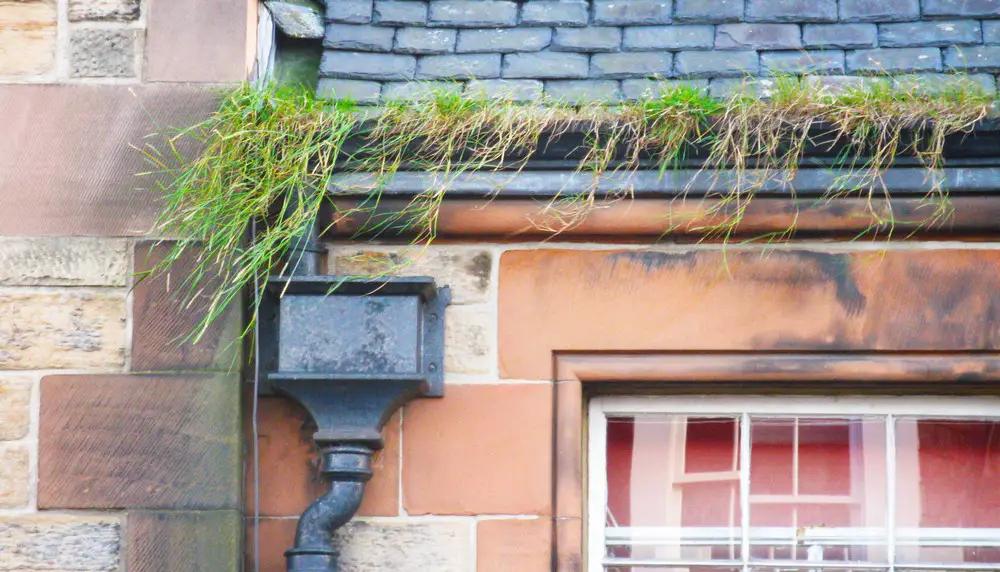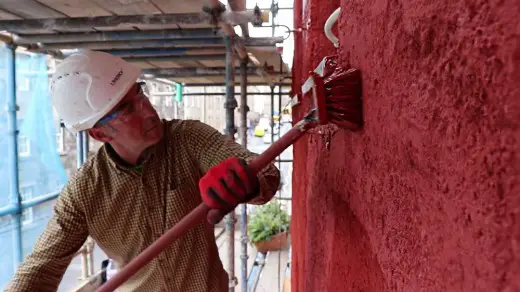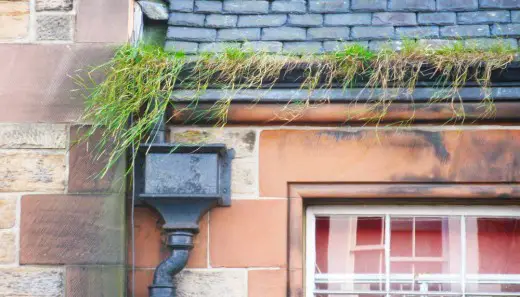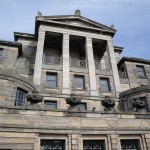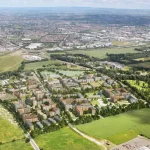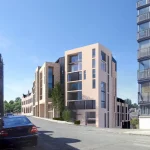2020 Edinburgh World Heritage Climate Emergency Manifesto, Scottish Architecture News
Edinburgh World Heritage Climate Emergency Manifesto 2020
18 Sep 2020
Edinburgh World Heritage publishes climate emergency manifesto
Edinburgh World Heritage today issued a call for the historic environment, which includes buildings, parks and open spaces, to be ‘at the heart of the city’s response to the climate emergency’ with a 10-point manifesto aimed at policy makers, experts and residents.
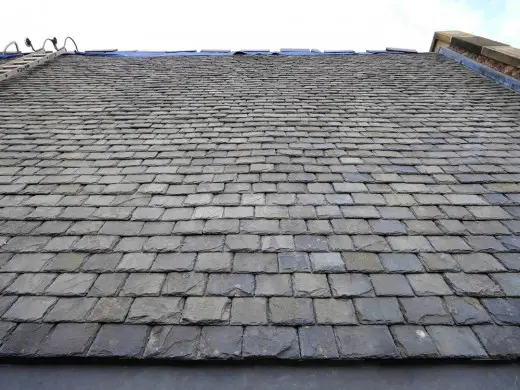
photo © Edinburgh World Heritage
Edinburgh World Heritage Climate Emergency Manifesto News
The manifesto, published during Scottish Climate Week, points out ways in which Edinburgh’s traditional buildings – such as tenements, houses, shops and public buildings, can be sensitively improved to both reduce energy consumption and better adapt to changing weather patterns.
Edinburgh’s climate emergency and the historic environment – Edinburgh World Heritage manifesto
1. The historic environment and our traditional buildings are part of the solution to effectively dealing with the climate emergency.
The Old and New Towns of Edinburgh World Heritage Site is of unique value not only to Scotland, but also to the world, and comprises nearly 4,500 individual buildings, 75% of which are listed. As we work to address the challenges of the climate emergency, this extraordinary heritage asset must be taken into account, and indeed become part of the solution. We believe that through regular maintenance, high quality conservation, and the implementation of sensitive energy efficiency and adaptation measures, Edinburgh’s historic environment can be at the heart of the city’s plans to address the challenge of climate change.
2. Many of the measures that will be taken to address the climate emergency are also an opportunity to strengthen the conservation, understanding and appreciation of Old & New Towns of Edinburgh World Heritage Site.
Actions taken to help address the climate emergency will, if properly planned and executed, also result in our traditional buildings being better maintained and able to meet the demands of a changing climate. The drive for greater energy efficiency in homes, shops and other buildings should also make living in heritage areas more affordable and therefore more attractive to a wider range of people. Additionally, the new focus on traffic reduction and tackling air pollution, together with improving infrastructure for cyclists and pedestrians, will make our World Heritage Site a more enjoyable and inspiring place to live and visit.
3. The historic environment and our traditional buildings are inherently sustainable.
The traditional buildings in Edinburgh were constructed using mainly natural local materials, such as Craigleith sandstone, Scots slate, lime and iron, and are well adapted to local weather conditions. These structures also represent a significant volume of embodied carbon, in terms of both the materials used, and energy expended in their construction. The continued use and adaptive re-use of our traditional buildings is testament to their inherent flexibility and desirability, as well as the simplicity of their repair and maintenance which in turn benefits our local economy through the employment of people engaged in traditional building trades.
4. Replacing traditional buildings with new ones is generally both wasteful and unsustainable.
New buildings require decades to offset the carbon emissions produced during their construction. This can be demonstrated by using a ‘whole life’ carbon assessment methodology rather than one just based on operational efficiency. Given the need to cut carbon emissions immediately, replacing traditional buildings with new structures makes no sense from a carbon reduction point of view. In fact, justifying this practice based on environmental factors is often ‘greenwashing’ and obscures the real economic factors influencing new development. Demolition is also wasteful and often leads to the discarding of valuable traditional materials.
5. Regular maintenance of traditional buildings can both mitigate the effects of a changing climate and improve energy efficiency.
Poorly maintained buildings are extremely vulnerable to extremes of weather. Good maintenance is therefore the first essential step in preparing a traditional building for a changing climate. Additionally, buildings which are well maintained, and therefore wind and water-tight, are also more energy efficient.
6. Sensitive interventions proven to improve the energy efficiency of traditional buildings are an effective way to reduce carbon emissions.
Working with traditional buildings to develop sensitive energy efficiency solutions based on an understanding of their technical construction, historical significance and cultural value is, in most cases, the best way to deal with the challenges of the climate emergency within the traditional building sector.
This approach puts the original fabric of the building first to ensure the building is functioning as it was intended before any interventions are considered, each of which need to be justified on the basis of technical knowledge relevant to our local environment. This approach also considers the whole building from attic insulation and draughtproofing to improvements in the efficiency of heating and lighting systems. If this approach is followed, retrofitting and upgrading existing buildings will generate far fewer carbon emissions versus demolition and new build.
7. Technical solutions designed for modern buildings can be inappropriate for traditional structures and can even cause harm and reduce the building’s efficiency.
Modern buildings are designed in a fundamentally different way to traditional houses, tenements and public buildings. For example, traditional buildings are designed to be breathable and allow moisture to escape versus new builds which are often designed to be fully sealed. Inappropriate interventions, such as the use of impermeable insulating materials, can trap moisture and lead to mould growth, and therefore sometimes damage traditional buildings and create unintended consequences.
8. Our public realm and green spaces are an integral part of the design of our historic city and can play an important role in our response to the climate emergency. Their unique character should be preserved when new interventions are proposed.
Edinburgh is one of Europe’s greenest cities, with an abundance of parks and gardens, as well as well-designed areas of streetscape and public realm, all of which are key aspects of our World Heritage Site listing. These common areas can also play an important role in our response to the climate emergency through for example enhancing effective drainage, sustaining biodiversity, limiting any ‘heat island’ effect in the city, and encouraging active travel by foot or bike. However, changes to the public real must take into account its unique character and heritage value.
9. Local communities and residents should be empowered and supported to play an active role in delivering solutions to tackle climate change.
The conservation of Edinburgh’s Old and New Towns and its subsequent World Heritage listing could not have been achieved without the active participation, enthusiasm and commitment of its residents. As the city faces this next great challenge, local communities need to be informed and empowered once again so that appropriate solutions are implemented with the support of our resident population.
10. Proposed changes to our traditional buildings and public realm, must be based on conservation best practice and adapted to Edinburgh’s unique historic environment. Fully understanding the significance of the historic environment can help unlock the potential for such change.
An evidence-based approach is crucial if we are to effectively respond to the challenges of the climate emergency while preserving the unique value of our heritage. While much work has been done in this area, further exemplar projects should be funded and executed which take into account our unique local context and which could be quickly expanded at scale across the city.
Edinburgh World Heritage Climate Emergency Manifesto images / information received 180920
Edinburgh Architecture
EAA Awards
EAA Awards
Conservation and energy efficiency work on the Canongate
Canongate Housing Development
Comments / photos for the Edinburgh World Heritage Climate Emergency Manifesto page welcome
